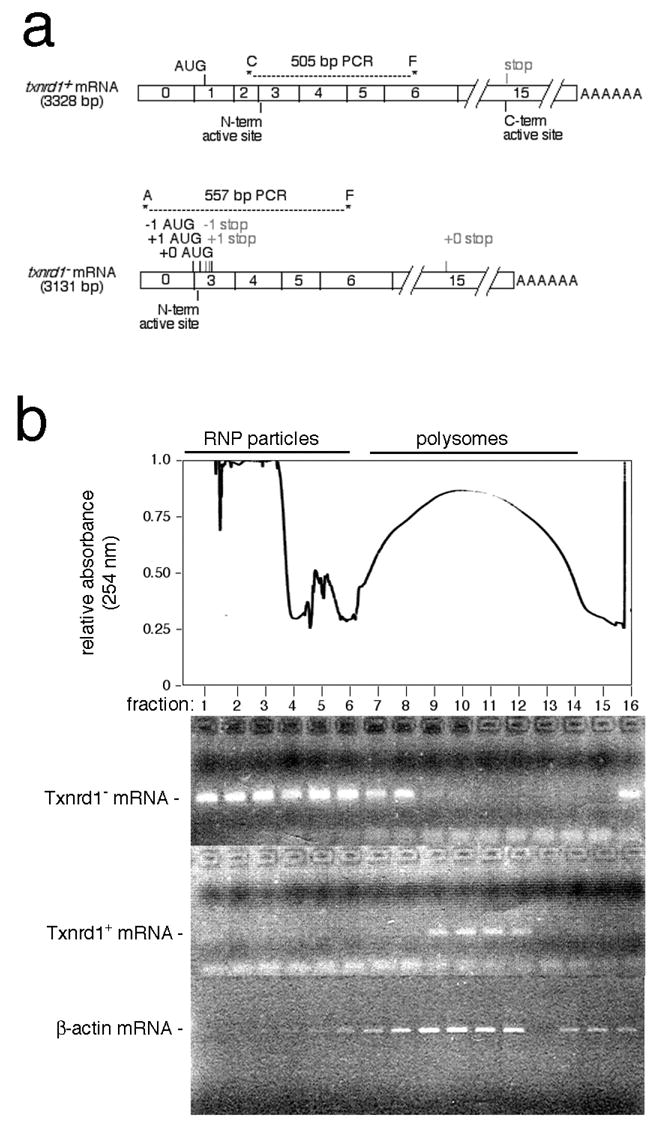Fig. 2.

The recombined txnrd1− allele issues a non-translated mRNA. a, schematic. Predicted mRNAs from the wild-type and null alleles are shown. Diagonostic RT-PCR primer pairs and the sizes of expected products are indicated. RT-PCR-based cloning of Txnrd1 cDNAs from heterozygous mouse kidney RNA samples indicated that exon 0 spliced precisely to exon 3 (data not shown). The first two ATGs initiate short out-of-Txnrd1-frame ORFs that would issue predicted oligopeptides of 13 (-1 frame) and 8 (+1 frame) amino acids, respectively (first ATG generated by the exon 0/3 splice junction). The third ATG is in the Txnrd1 reading frame, at Met70 in exon 3. Due to context (AAGCTGATGC), this ATG is predicted to not function as an initiator. b, translational efficiency of Txnrd1+ and Txnrd1− mRNAs in heterozygous mouse liver. At top is shown an absorbance scan of a representative liver polysome gradient with the positions of ribonucleoprotein particles (RNP) and polysomes indicated above and the positions of gradient fractions indicated below. Below are RT-PCR analyses of the positions of Txnrd1 mRNAs in a heterozygous mouse liver polysome gradient using the PCR primer sets indicated in panel a.
